Technique for painting by numbers on canvas. My favorite hobby. Painting by numbers
Drawing- one of the most important ways for a child to learn about the world around him, and its importance for the development of a child cannot be overestimated. This is a way of self-expression and manifestation of your creative abilities. Drawing develops thinking, memory, visual perception, and observation.
One of the simplest and first artistic techniques is working with. In the process of coloring simple drawings, the youngest artists learn perseverance, accuracy, become familiar with the variety of colors and shades, and develop fine motor skills and, accordingly, speech.
Older creative types should be offered more complex coloring books - paintings by numbers. These are contour drawings applied to canvas and divided into segments indicated by numbers. In the process of painting the segments with paints of the desired colors and shades, a picture is obtained that is practically indistinguishable from classical painting.
How to work with paintings (coloring) by numbers?
Kit for drawing a picture by numbers comprises:
- the painting itself,
- several nylon fiber brushes,
- palette of colors.
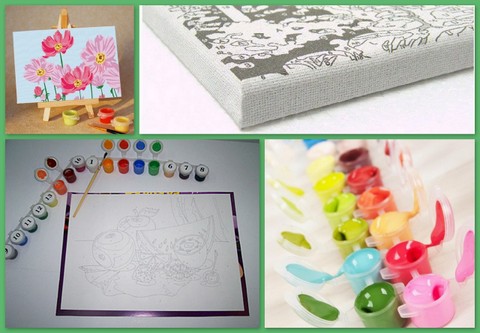
The kit may also include fastenings for placing the future masterpiece on a vertical surface and instructions.
The painting is usually painted on canvas already stretched on a stretcher. Sometimes manufacturers apply paintings onto primed cardboard. Such pictures are suitable for young children who are just mastering this type of work.
The number of brushes in a set depends on the complexity of the design; most often there are 3-4 of them, of different thicknesses.
When choosing a painting by numbers for a child, you should pay special attention to the paints. High-quality painting kits are equipped with special environmentally friendly and safe odorless acrylic paints. Each shade is placed in a separate jar and numbered. The numbers on the segments of the picture correspond to the shade numbers.
The technique for doing the job is very simple: it is necessary to apply paints of certain numbers with a brush of suitable thickness to the segments marked with the same number as the selected paint color.
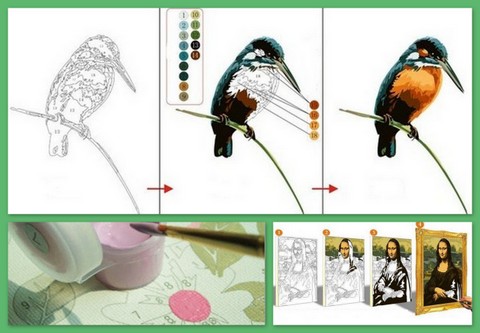
Acrylic paints do not need to be diluted with water (only if it is necessary to achieve the desired viscosity), they dry quickly and make it possible to achieve a rich and bright color when applied in several layers.
In the process of coloring a picture by numbers you may need:
— pure water(if the paints are too thick)
- a piece of cloth to wipe your hands,
- matches or toothpicks for stirring paints.
These items should be prepared in advance.
After finishing the work, you should tightly close all containers with paint and rinse the brushes thoroughly, since the acrylic that has dried on them will no longer dissolve in water and the brush will be damaged.
How to choose a painting by numbers according to the child’s age?
Paintings by numbers for different age groups differ in their size, theme of drawings, size of segments and number of colors and shades (level of complexity).

For the little ones Canvases measuring 10*15 or 20*30 cm are suitable, with a minimum set of bright colors and a small number of large segments, with various funny stories, characters from fairy tales and cartoons. Such paintings are suitable for children aged 3-4 years.
Children aged 7-12 years You can offer canvases 30*30 cm. The level of complexity of these paintings is slightly higher, they already have a more diverse palette and a smaller size of segments.
For children over 12 years old and adults paintings with sizes from 30*40 to 60*80 cm, as well as diptychs and triptychs are suitable. The paintings represent complex subjects, with a large number of very small segments and a wide palette of colors and shades.
Although coloring by numbers was originally a form of entertainment for children, this type of creativity has quickly become popular among adults. After all, even a person who does not know how to draw can create a real work of art using a template of such a painting. For mothers of little fidgets, painting by numbers is an opportunity to take a little break from everyday life, plunging into the world of beauty and creativity.
Subjects of paintings by numbers
Modern paintings by numbers are represented by a huge selection of drawings on a wide variety of themes and subjects. For children there are paintings depicting their favorite characters and fairy tale characters, scenes from cartoons, cute and kind animals, as well as simple, unencumbered images of various objects, toys, plants and flowers.
Paintings by numbers for adult lovers of this type of creativity have an even more extensive theme.

Like fine art in general, these paintings are divided into genres, the most popular of which are:
— landscapes (sea, city, seasons);
— still lifes (images of flowers, fruits or vegetables, cutlery, utensils and other things);
— portraits;
- animalistic - images of animals.
In addition, paintings by numbers depicting copies of paintings by famous artists, works of art, wonders of the world and simply world-famous places on the planet, copies of works by popular photographers are in great demand.
Using paint by number kits and sticking to simple recommendations, every person, child or adult, can create a work of art with their own hands and feel like a creator of beauty, without being a professional artist.
Why don't you be the first to know about everything? Subscribe to blog updates right now!
Basically, when drawing by numbers, they use acrylic paints. They are very popular in the art community because of their versatility. Suitable for beginners and professionals alike, ideal for learning a new technique or expanding your creativity. Their texture is very similar to oil paints. A good result requires little patience or accuracy; the manufacturer also plays a big role. The quality of the paint is important; contour drawings should, on the one hand, be clear and easy to read, and on the other hand, invisible under a layer of paint. Special paper or canvas on which the paint will (or will not) adhere well.
1. Acrylic is a quick-drying paint. If you are not going to draw now, do not open the cans. Their original packaging allows them to be stored for an almost unlimited period of time, but after opening their service life is significantly reduced. If you have never tried this type of creativity, buy a small painting, since first you will need some time to develop the skill of drawing by numbers.2. If the paints have thickened a little during the painting process, you can add a few drops of water; this does not affect their properties. But if they are completely dry, it is impossible to restore them!
3. Paints are stored for a minimum of 12 weeks after opening, subject to certain rules.
Be sure to close the jars tightly and correctly, cleaning the edges of dried paint (this may prevent the lid from sealing tightly)
Use a toothpick to clean hard-to-reach places
In case of long breaks in coloring, wrap thoroughly cleaned and tightly closed jars in a damp cloth and pack them in a plastic bag or sealed plastic container. This will protect them from drying out.
During prolonged painting, the paints may become thicker. Don't be afraid to add a drop of water and mix thoroughly
4. Before you start coloring, prepare a jar of water (to wash your brushes), several rags (to wipe your brushes, hands, table, etc.), toothpicks - stir the paints and use them to paint the smallest details. A saucer, plate or palette - for mixing paints.
5. The sets, depending on the manufacturer, the size and complexity of the painting, include from one to 5 brushes. We recommend purchasing additional brushes in different sizes in advance. They are inexpensive, sold in any office supply department, but will greatly help you when coloring. And, most importantly, you will be able to separate the brushes - some to use only for light colors, some - only for dark ones, which will completely eliminate the mixing of paints when carelessly washing the brush. 6. If you often paint by numbers, we recommend purchasing a set of acrylic paints (base colors) in art stores, which will allow you to eliminate the problem of paint drying (of course, choosing a shade will take some time) and enhance the relief of the work. However, the paint sets contain enough paint for complete painting in 2-3 layers.
6. Open jars carefully, following the manufacturer's instructions to avoid damaging them.
7. Hold the brush the way you would hold your hand. Don't bend your hand to make drawing easier - rotate the picture!
8. Apply paint only to the very tip of the brush. It’s better to dip the brush into the jar twice than to ruin the design by dripping on it. If, however, this happens, use damp cotton swabs to remove excess.
9. Color the picture in one of two ways - linearly, from top to bottom, to prevent smearing by hand, or from top to bottom, but first the background, then the foreground.
10. Start coloring with light colors, then darker ones, color the mixed parts last.
11. If, after finishing painting, numbers are visible somewhere, apply a second layer of paint to these segments. To give relief and a resemblance to oil, apply several layers to some elements.
12. After drying, the painting can be coated with glossy or matte varnish; this will “strengthen” it and allow it to be wiped with a slightly damp cloth. In the first case it will become brighter, in the second it will not glare. A frame will add completeness to your work.
Canvas or cardboard??
This is not to say that canvas is better. Or, better yet, cardboard. Let's talk about the advantages and disadvantages of both. Cardboard– it’s easier to draw on it; if this is your first painting, choose cardboard. Paints adhere better, paintings on cardboard are cheaper. But, if this picture hangs in a house with temperature changes (for example, at a dacha, where you only visit in the summer, but New Year) – the cardboard may begin to deform. True, if you put it in a frame, this will not happen. Canvas on stretcher– not afraid of humidity, looks more “real”, can be hung on the wall without a frame, it will look great. But. It’s harder to paint, it’s better to do it in a vertical position of the canvas (use an easel or build a stand from scrap materials, such as books), the paint goes on harder. If you decide to use a frame, you will have to order it from a framing shop due to its thickness. Higher cost.How do paintings from different manufacturers differ?
We sell paintings by numbers only the best manufacturers, but they also differ very significantly. Let's talk briefly about each.Schipper– Germany, premium class paintings. The kits do not require mixing paints. Material – cardboard, top layer – special paper, similar in texture to canvas. Bright colors, large selection of reproductions of paintings by famous artists. There is a large selection of sizes, including 50*80, there are triptychs that look very impressive. A high price that is fully justified by its unsurpassed quality. “Solid” packaging, such a picture - great gift(and if you take a big one, the gift will be simply magnificent). According to many - the best coloring by numbers.
Menglei– the largest manufacturer in Asia, paintings of the highest quality. The paints do not require mixing. Material: canvas on a stretcher (self-assembly required). Full feeling of “real” drawing. Affordable prices with high quality, many reproductions, landscapes, still lifes. Various sizes, from 10*15 to 120*240 cm!!
Reeves– England, manufacturer with 200 years of “experience”. Paint mixing required. Material: cardboard, special texture very similar to canvas. This manufacturer’s assortment also includes sets for coloring with pencils, watercolors, colored pencils and others.
Copying site materials is permitted only if there is an active backlink and attribution.The algorithm for working with a picture is as follows:
1) Find the correct pigment number corresponding to the number on the picture that you want to paint over
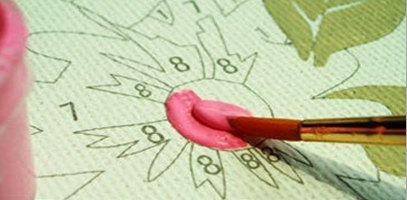 2) Paint over the fragment of the painting corresponding to the paint number. Important: do not dilute paints with water!
2) Paint over the fragment of the painting corresponding to the paint number. Important: do not dilute paints with water!
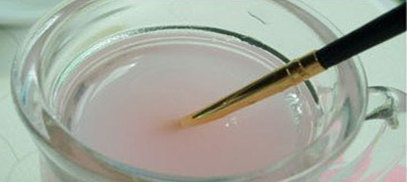 3) Having finished one number, the brush should be washed. Important: do not mix colors!
3) Having finished one number, the brush should be washed. Important: do not mix colors!
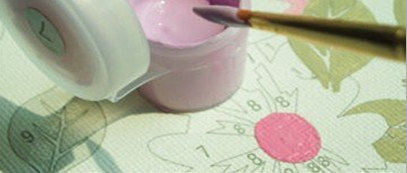 4)Using a dry brush, move on to the next number.
4)Using a dry brush, move on to the next number.
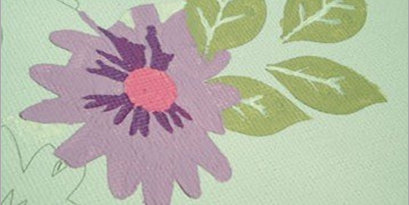 5) Color all the numbers on the canvas and you will see the result of your work.
5) Color all the numbers on the canvas and you will see the result of your work.
Warning
1.Paints dry very quickly! Make sure the paint pot's lid is tightly closed when not in use.
2.Don't leave your brushes in the paint! Wash your brush thoroughly immediately after use.
3. Paints have a fixing force, so they cannot be washed off after drying.
4.Do not allow paint to dry completely on your hands, clothes or interior items! Wash it off as quickly as possible.
5.Do not give to children under 3 years old - contains small parts!
COLORING TIPS
So, in front of you is an open set of paint-by-numbers coloring books and you can’t wait to start creating your masterpiece. The tips below will help you draw a picture in such a way that you can be proud of your work, and after finishing painting you will hardly be able to guess that the picture was painted using this method (by numbers).
Of course, in this article it is impossible to tell and describe all the nuances that exist, since painting is a real art. We simply tried to summarize the practical drawing experience we have already accumulated along with the recommendations of various manufacturers and present it in the most accessible form. So:
DRAWING SEQUENCE RULES
Preparing paints
Before you start painting, you need to carefully prepare your paints. The whole trick is that MENGLEI and Truehearted products do not require any mixing of paints to obtain the desired shade and effect: everything is already completely ready and numbered, since the manufacturer took care of this in advance! Our paint sets are perfectly matched to color scheme and presented in the right quantity so that your future masterpiece is guaranteed to be similar to the original, and maybe even better;-) It all depends on you!
Pay attention to the numbering of paints in containers
When painting by numbers, it is extremely important that the numbers on the containers match the numbers on the canvas. Some plots involve the use of several containers with the same color of paint, respectively, these paints have the same number. Therefore, the numbering sequence is as follows:

Opening bottles
Open bottles of paint carefully, without using force - this may damage the bottle. To prevent paint from drying out, always open only those paints that you really need at the moment.
Drawing
For convenience, place the following items near you: an image of the finished painting, paints, a brush, a canvas with an outline, a control sheet, a glass of water, a piece of cloth and matches for stirring the paints. It is better to choose a place with good lighting. Outline large surfaces first with a thin brush, and then paint over the surfaces with a thicker brush. Make sure you fill in the contour lines. It is considered normal if dark paint covers better than light paint. If the outlines or numbers show through, apply paint to them several times.
How to hold a brush
Hold the brush like a pen. For stability, place your hand on the surface and rotate the picture so that its location is convenient for you.
Drawing order
There is no single approach to the order of painting. There are several drawing techniques:
1)You can draw a picture using the “line by line” method, from the top edge of the picture to the bottom.
2)However, you can achieve better results if you paint using the "background to foreground" method, first painting the objects in the background and then the ones in the foreground. For example, you are drawing a landscape. In this case, the drawing order is as follows: 1. sky, 2. clouds, 3. meadow, 4. trees, 5. leaves, 6. flowers.
Sometimes the question may also arise: should I paint a picture by numbers or by colors? Empirically and experimentally (Attention: such conclusions were made by “practitioners” and are not official recommendations of the manufacturer), some users identified two options:
1) In the sequence of numbering of paints in the set:
- from increasing the total number of areas and contours that need to be painted with one color to decreasing. Example: with paint No. 1 in the set you need to paint 15 contours, and with paint No. 2 - ten contours.
- from a larger total area of contours that need to be painted with one color to a smaller one. This can be assessed visually by eye.
2) In sequence from lighter shades and colors to more saturated and dark ones. This is due to the fact that if there is an error in coloring, it is much more difficult to paint dark segments with light paint than it is to paint light segments with dark paint. In other words, in order to paint a dark segment with white paint, you need more layers and vice versa: you can paint a light segment with dark paint in one layer, i.e. much easier.
As you can see, there are many variations and interpretations of the paint by number technique. Various combinations and alternations of techniques and methods are also possible, which provides us with an endless number of options. In other words, you are absolutely not limited by anything except your imagination, desires and skills. You shouldn’t get hung up on anything: you need to draw in a way that is convenient, pleasant and comfortable for you. Just start drawing a picture and in the process you will understand which technique and method of drawing is most pleasant and convenient for you.
For a perfect image of the finished painting paint over unpainted areas and visible numbers. As in art galleries, you need to look at the painting and evaluate it from a distance of 2-3 meters.
Notes to skilled artists
The painting effect can be enhanced by applying different thicknesses of paint. To do this, apply the remaining paint in a thick layer to the elements of the picture that you would like to highlight. This will give the picture a relief effect.
Varnishing
Acrylic paints after drying acquire a slight gloss and beautiful view. The surface of the painting can be wiped with a slightly damp cloth. No additional care required. If desired, a week after the painting has dried, you can coat its surface with a special varnish for paintings. Glossy varnish will enhance the brightness of the colors, and matte varnish will remove glare. Varnish can be purchased in special stores for artists and craftsmen.
Frame
By placing the picture in an appropriate beautiful frame, it will become a real masterpiece! To preserve the effect of the painting, you do not need to place it under glass. You can decorate your painting with a regular frame from self-service stores, or an elegant frame from specialty stores or galleries.
RULES FOR USING PAINTS
To paint without problems, you must follow the rules for using paints. This is extremely important!
Therefore, we ask you to carefully read the following rules and follow the drawing instructions.
Important: Once the paint cans are opened, the paint has a limited shelf life!
Rule 1
Open paint cans just before you start painting. It is very difficult to package quick-drying paints in such a small volume (about 3 ml) in such a way that they can be stored for a long time. Cans of paint, which are the development of the latest generation of the company MENGLEI and Truehearted fulfill this requirement. However, once they have been opened, the paint may dry out. Therefore, the amateur artist should complete the painting as soon as possible after opening the paint cans
Rule 2
Using a brush, remove any stuck paint from the lid back into the jar. Boxes in a store or warehouse could be stored vertically. Therefore, when opening the jar, some paint may be on the lid.
Rule 3
Despite the fact that paint containers are tightly closed and are specially designed to preserve all the properties of the paint, the paint in them may thicken slightly during storage, for example, due to temperature changes. To “revive” paints and use them again, simply add a couple of drops of water to them and stir thoroughly. The paints are ready to use again!
Rule 4
Once the paint cans have been opened, try to complete the painting without taking long breaks. After opening the jars for the first time, there is a possibility that the paints may dry out. Therefore, after opening paint cans, try to use them within a maximum of 12 weeks.
Rule 5
If you want to take a break from working, close the containers tightly, first removing traces of liquid or already dried paint from the lid itself, from the edges of the lid and the sealing grooves of the lid.
Figures A and B show the principle
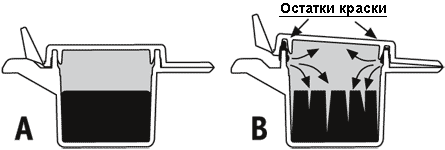
In Figure AThe container is airtight because the edges of the container fit smoothly into the clean sealing grooves in the lid. The lid fits tightly to the edges of the jar.
In Figure B improperly closed jar. It can be seen that the remaining paint prevents the lid from closing tightly. Therefore, air entering the container dries out the paint. Therefore, clean each jar thoroughly before sealing it. Remove excess paint from the edge of the container with a fingernail or rag, and remove the round sealing grooves with a toothpick or large needle. Before closing the jar, make sure its rims and lid are clean.

Rule 6
If you plan to take a break from painting for a few weeks, seal the paint pots tightly as described above, then wrap them in a damp cloth and place them in a plastic bag or plastic box. This will help protect the paints from drying out. However, this cannot guarantee that already opened paints will remain ready for use and retain their properties for many months or years.
Rule 7
After each break in painting, the viscosity of the paints should be slightly adjusted to ensure proper application. After all, paints contain water, which quickly evaporates from open containers. Therefore, the colors thicken a little. But this is easy to fix: add a few drops of water and mix thoroughly.
RULES FOR CARE OF BRUSHES
In order for the brush to serve you for a long time and with high quality, you must follow the recommendations below. Artists sometimes complain about the quality of brushes. However, in most cases this is due to improper brush care.
The most common mistakes:

1. Do not leave the brush in a glass of water.
2. Never clean your brush with aggressive chemicals.
3. Never use a brush to stir paint.
4. Never use your nails to remove dried paint.
Proper care:
|
The brush consists of three parts: a handle, metal fasteners and a fleecy part. 1. After painting, immediately wipe off any remaining paint from the brush. 2. Rinse the brush in clean warm water. 3. Gently lather the brush and then rinse it again. 4. Wipe the water off the brush using a rotating motion. Paint should not remain on the end of the metal fastener. 5. Use your fingers to shape the bristly part of the brush back to its original shape, forming the tip. 6. Put the brush down and let it dry on its own. Do not use a heater or hair dryer! The most important rule is not to be afraid! Color for fun - Everything will work out! Happy coloring and shopping! |
This is a very exciting activity.. drawing..
You can draw a picture of the famous artist yourself!
It is called - paintings-coloring pages By numbers..
Pierre-Auguste Renoir painted "On the Terrace" in 1881.
it is painted in oil on canvas. The coloring of the painting depicts how, on a beautiful spring day, a mother and daughter are sitting on the terrace and enjoying the fresh air. They are dressed in colorful outfits to be as beautiful as the nature around them.


How to draw pictures
- It's very easy to start drawing by numbers. All that is required of a novice artist is to paint over areas in the picture with paint with the corresponding number on the jar.
- In addition, you can apply paint in 2-3 layers, allowing the previous layer to dry. In this case, the colors will be more saturated. If you need to find out the number of an area that you have already painted, you should refer to the control sheet.
- We also note that too small details in such coloring pages are indicated by numbers with extension lines, since the numbers may not always fit in the space provided for this.
- For ease of drawing, use an easel.
Drawing by numbers technique
Of course, when you paint for the first time, a lot of questions will arise: what numbers to start with, from what corner of the picture should you start coloring, what tones (light or dark), how to make brush strokes and what kind of brush. Unfortunately, or perhaps fortunately for some, there is no clear answer to all these questions. Coloring, like drawing, is an individual process., everyone finds their own only correct path.
This is the special beauty of creativity: you must independently find your own drawing style, receiving maximum positive emotions from this creative process. We have done all the preparatory work for you: canvases, stretchers, cardboards, outlines, brushes, mixing paints. Everything else is the very process from which you should receive satisfaction.
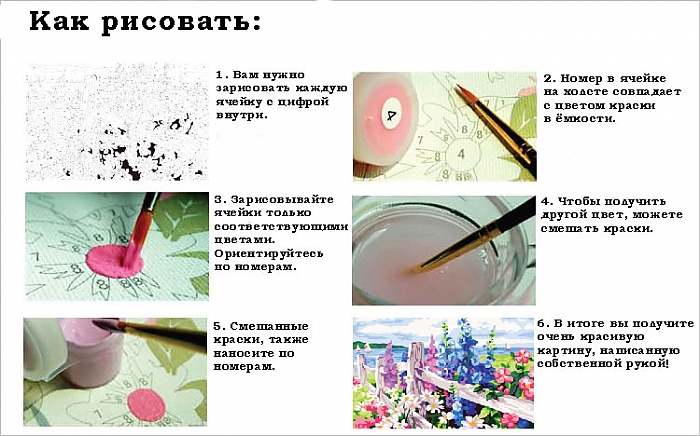
Difficulty level selection
The level of complexity of the coloring is indicated by star numbers - from one to four (five stars for triple paintings of the same triptych plot). Accordingly, the more stars, the large quantity The coloring contains contours (details) and numbers with extension lines, the more time it will take to color it.
Using paints
Acrylic paints, which are used for painting, dry quite quickly, but it still takes some time (1-2 minutes) for the previous layer to dry. Such paints can be stored in a closed container for several months or even years. But if you open the jar and use the paint, the shelf life, of course, is significantly reduced. In addition, it is worth paying attention: dried acrylic paint cannot be diluted with anything.
To prevent drying, close the paint container tightly after each use. It is also worth cleaning the edges of the jar and lid every time if traces of dried paint appear on them: they can break the seal of the package. If possible, you should paint all areas with one number before moving on to others. This way you won't have to open all the paints often, which will prevent them from drying out prematurely.
Brush selection
Use round brushes to draw details, and use flat brushes to paint large areas of the background or varnish a finished picture. When changing from one paint color to another, rinse your brush well in water and blot it with a paper or cloth napkin to prevent drops of water from getting into the paint. If you paint with one color for quite a long time, it is also recommended to wash your brush every 5 minutes so that the paint does not dry out at the base of the brush. Do not leave your brush unwashed if you take a break from painting - dried paint will make the brush unusable for painting. In this case, the brushes will serve you for as long as possible.
What to choose? Canvas or cardboard
There is no clear answer to the choice between canvas and cardboard. Cardboard is cheaper, canvas is much more interesting in terms of creativity. It is easier for beginners to paint on cardboard - the paints adhere better due to the smaller grain size. In addition, paintings based on cardboard can be easily placed in a standard thin photo frame from the store, while canvas will require a larger and more expensive frame.
Without a frame on the wall, the picture (based on cardboard) looks somewhat unfinished and may bend over time due to changes in humidity. Unlike canvas, which is already stretched on a stretcher, and therefore less susceptible to changes in humidity. A painting on canvas without a frame is more voluminous due to the thickness of the stretcher; it can be hung just like that. But most importantly, when painting on a real canvas, you get a clear feeling that you are a Real Artist with a capital “A”!
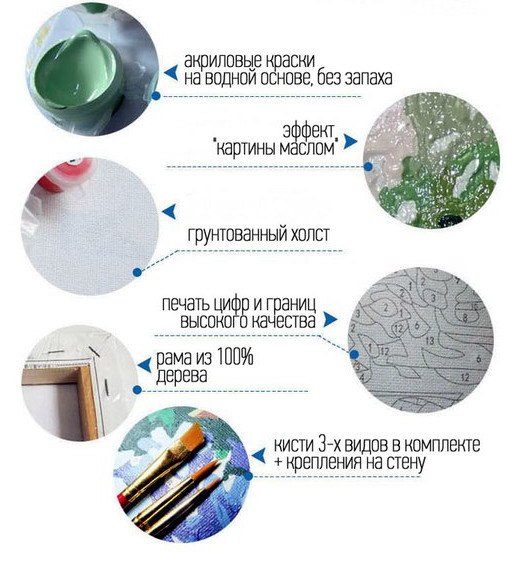
Varnish coating
As a rule, it is not necessary to varnish a painting painted with acrylic paints. Therefore, it is not included in the set and is purchased as an additional accessory. However, matte acrylic varnish will help keep the colors of the painting vibrant longer, especially if it is in a highly lit area or exposed to direct sunlight. However, it will not shine. Glossy acrylic varnish, on the contrary, will add shine to the picture, if you need it and matches the lighting of the place in the interior.
Frame selection
Our store offers a wide selection of frames for all types of paintings - both on cardboard and on canvas. You can order them either together with a coloring picture or separately. Here are some tips for choosing frames:
- Often, the frame is matched to the picture, less often to the surrounding interior.
- According to the advice of designers, small paintings look better with a frame of minimal width or without a frame at all. Medium (40*50cm) and large paintings can be decorated more expressively.
- You can hang a picture in a frame close to the wall, when the picture fits completely into the groove (or quarter) of the frame, or you can hang it with a gap - this will add additional volume. For paintings on canvas with a stretcher, the gap can be from 5 to 10 mm, due to the different depth of the quarter.
Storing paintings
If you love novelty and plan to change the paintings in the interior from time to time, then:
- Save the packaging of the paint by number set. It will protect the painting from dust, light and mechanical influences.
- Store the painting only in a dry place, at room temperature - strong changes in temperature and humidity can deform the stretcher and weaken the stretch of the canvas.
www
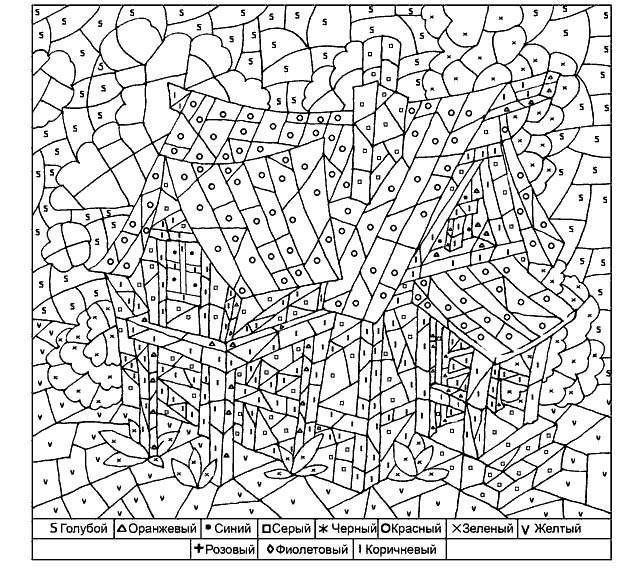
Paintings by numbers- a great opportunity to realize your creative potential even without special artistic training. All you need is a ready-made paint-by-numbers kit, which is sold in one set!
Briefly about the main thing:
Coloring by numbers - prices and where to buy
Prices for paintings by numbers range from a few dollars to several hundred dollars. Why is there such a wide range in prices? In fact, there are many factors that influence the price - this is the size of the canvas, the complexity of the design, the type of painting (canvas/cardboard), the completeness of the package, the brand.
Where is the best place to buy coloring by numbers?
The best place to buy paintings for coloring by numbers is where our local stores buy them - on Aliexpress. There you can not only purchase coloring books at the lowest prices, but also choose a more suitable version of the painting - the choice on Ali is simply huge - about 23,000 options!
Link to the drawing by numbers section on Aliexpress: http://ru.aliexpress.com/
MONEY REFUND IN ONLINE STORESGet some money back from every purchase in online stores! Already in the return database 788 stores from all over the CIS
- Aliexpress - 5% refund on every purchase
- L'Etoile - refund 150 rubles for order amount more than 900 rubles
- BonPrix - 5% refund when order amount is more than 500 rubles
What is included in a standard set of paintings by numbers for coloring?
Color by number They are sold in sets - small sets of all the accessories needed to create a complete picture. The contents of the set may vary slightly from manufacturer to manufacturer; the most standard set consists of the following items:
- Canvas or cardboard with the contours of the design and cells with color numbers printed on them
- Paints in numbered jars, sometimes tubes with different colors (from 14 to 36)
- Paint brushes - from one to three, depending on the set
- Checklist for checking numbers
- Instructions
- A box of the entire set with an image of how the picture should turn out. This is another option for checking the correctness of drawing
- Canvas Mounts
- Sometimes the canvas comes separately, not stretched over a frame. Then the package also includes a canvas frame
More about the set items
Canvas
Canvas is a fabric material on which the base itself is produced. painting by numbers. This is one of the two basic types of painting by numbers canvas.
Advantages of canvas:
- this is a more professional type of creativity - when drawing you get the feeling that you are a real artist
- Canvas on a stretcher has a more voluminous appearance and can be hung on the wall without a frame (gallery method)
- The canvas is practically unaffected by humidity and air temperature
Disadvantages of canvas for drawing:
- Canvas has a grainy canvas texture, so beginners may find it a little difficult to apply paint at first.
- The canvas bends a little on the stretcher, so it is better to paint the picture in a vertical position, on a stand or easel
- If you want to make a frame, a regular photo frame will not work, since the canvas on the stretcher is relatively thick
- Color by numbers on canvas is more expensive than on cardboard
Cardboard
Cardboard is the second base option for painting by numbers. It has its advantages and disadvantages.
Advantages:
- It's easier for beginners to draw on cardboard because it doesn't sag.
- Paints adhere better to cardboard, you can paint in one layer
- It’s easy to choose a frame for a cardboard picture—you can take a regular photo frame
- Cardboard base is cheaper
Flaws:
- Cardboard paintings are susceptible to moisture and temperature and may “curl” over time. Almost definitely needs to be framed
- Without a frame it looks unfinished, like an ordinary painted sheet.
Painting by numbers- an example of a cardboard base. Please note - there is no grain:
As a rule, the kit comes with acrylic paints in special numbered jars or tubes. The number of colors varies, from 14 to 36. Why acrylic paints are used - the whole point is that they have unique qualities - acrylic is absolutely non-toxic, such paints have a very bright and rich color, they are resistant to light and fit well on any surface! Also, acrylic paints dry out very quickly, so be sure to close the paint jars - if they dry out, you won’t be able to dilute them.
Paint brushes
The sets range from one brush to three or more, depending on the type of surface and complexity of the canvas. For cardboard coloring books there is usually one brush, for paintings by numbers on canvas- two or three. Two brushes are thin and round - for drawing lines and small segments, and one flat - for drawing large segments. The brush material is usually synthetic.
Brushes should be thoroughly washed after painting and between changing colors to prevent the paint from drying out.
Brushes for painting by numbers. Please note that two of them are thin and sharp, and one is wide:
Painting by numbers - subtleties and what you need to know
Difficulty of drawing
Manufacturers of paintings by numbers usually use a five-star difficulty system: 1 star is the easiest level of painting, 5 stars is the hardest. Recommendations when purchasing - for children it is best to buy coloring books with a difficulty level of 1-2 stars and a small size. For an adult beginner, it is better to buy a painting with a difficulty level of 3 stars and eventually move on to 4-5.
Drawing technique
Drawing is first and foremost a creative process and, in principle, you can draw however you want.
However, there are a few tips to make the process easier and simpler:
- Try to paint sectors with numbers with the corresponding colors from top to bottom, this reduces the risk of smearing the paint with your sleeve (if you draw chaotically or from bottom to top)
- It is best to paint the cells with only one color at first, wait for the paint to dry and then proceed to the next color
- If you draw on canvas— you can paint in two or three layers, so the color saturation will become even higher!
- If you made a mistake with the color number and sector in the painting, it’s okay, just wait until the first “wrong” layer dries and apply the correct one on top of it
- In order to avoid mistakes, periodically refer to the control sheet and the finished version on the front side of the kit box.
- Small sectors can be indicated by color numbers with a stroke connecting the paint and the sector. Keep this in mind
- After painting, paints must be tightly covered so as not to dry out. Before closing, you can add a few drops of water to the surface of the paint - but do not stir!
- Brushes should be thoroughly washed after painting in water and blotted with a cloth. Don't let the paint dry on the brush - you won't be able to wash it off later.
- Shiny paints need to be applied in several layers - as they apply much worse to the surface
- If you want to make the paint thicker and more liquid, you can use water or special thickeners and thinners. Sometimes they come complete with paints.
How to store a painting by numbers and do you need a frame?
If the picture is not yet finished, it can be stored in the box that contains the entire set. But after you finish drawing, most likely you will want to hang your creation on the wall. There are a few tricks here. To make the painting shine better in a room where there is not enough light, you can apply glossy acrylic varnish to the canvas. And if, on the contrary, there is too much light in the room, you can apply matte acrylic varnish, it will remove excess shine and preserve the original colors of the painting.
Also, you will most likely need to make a frame for the picture. For a painting on canvas, of course, you can do without it - since the canvas is already stretched onto a three-dimensional frame. But for coloring by numbers on cardboard, a frame is required - you can buy it at any office (photo frame), or make it to order - if the picture has a non-standard size.
This is interesting: The history of the invention of paintings by numbers
Painting by numbers is a relatively recent invention. They were invented by two people in America in the 50s of the twentieth century. The first was a talented artist - Dan Robins, the second - an entrepreneur from Detroit (Michigan) Max Klein. The latter had his own paint production in this city. The emergence of paint-by-numbers is a classic example of collaboration between a good artist and an enterprising businessman. The first copy of paint-by-numbers went on sale in 1951 under the Craft Master brand. The first sets of paintings painted by Dan Robins consisted of a canvas, a set of paints and two brushes. Success was not long in coming - sales grew and already in 1954 sales volumes reached 12 million copies sold! Paintings with landscapes, images of domestic animals and religious themes were especially popular at that time. Each package was decorated with the slogan:
Every person is a Rembrandt!
